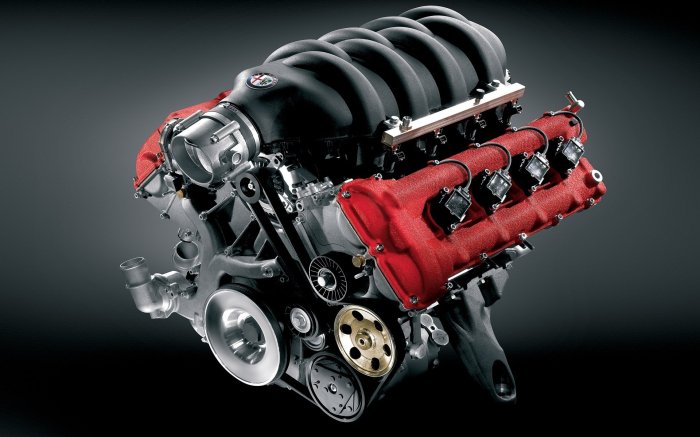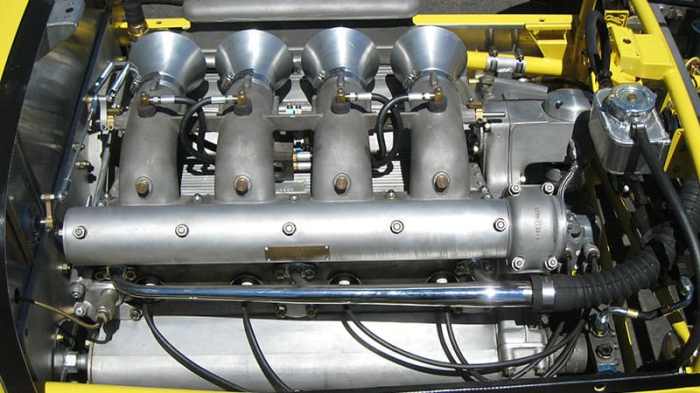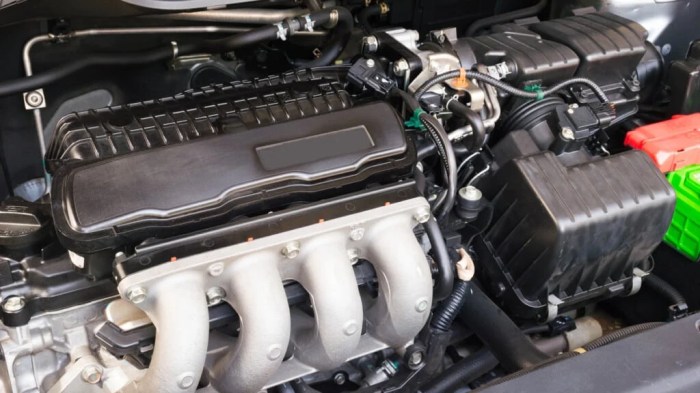4-cylinder engine specs explained opens a fascinating exploration into one of the most popular engine types in the automotive world. These engines are the backbone of countless vehicles, from compact cars to mid-sized SUVs, due to their balance of efficiency and power. Understanding their specifications, applications, and how they stack up against other engine configurations, such as 6-cylinder and V8 engines, offers valuable insights for both enthusiasts and everyday drivers alike.
Learn about more about the process of JDM sports cars 2024 in the field.
Offering a blend of performance and practicality, 4-cylinder engines have become a preferred choice for many manufacturers. Their design not only influences fuel efficiency but also plays a crucial role in overall vehicle dynamics. As we delve into the technical specifications, performance characteristics, and future trends surrounding these engines, you’ll discover why they remain relevant in an ever-evolving automotive landscape.
You also can understand valuable knowledge by exploring Best car battery brands.
Overview of 4-Cylinder Engines
A 4-cylinder engine is a type of internal combustion engine that features four cylinders arranged in a straight line or in a more complex configuration. This engine type is widely recognized for its balance of performance, fuel efficiency, and relatively compact size, making it suitable for a variety of vehicles. Most commonly, 4-cylinder engines are found in compact cars, sedans, and crossovers, providing an appealing combination for everyday drivers.
In comparison to other engine configurations, such as 6-cylinder and V8 engines, 4-cylinder engines typically offer better fuel economy and lower emissions. While larger engines may produce more power, 4-cylinder engines are designed to deliver adequate performance for most driving conditions without the additional weight and complexity associated with their larger counterparts.
Technical Specifications of 4-Cylinder Engines

Engine displacement is a critical specification for 4-cylinder engines, as it refers to the total volume of all the cylinders combined. Typically measured in liters or cubic centimeters (cc), displacement impacts an engine’s horsepower and torque. A larger displacement generally allows for more air and fuel mixture, which can enhance performance but may also impact fuel efficiency.
Horsepower and torque ratings are essential metrics for evaluating engine performance. Horsepower measures the engine’s ability to perform work over time, while torque indicates the engine’s rotational force. Together, these ratings provide a comprehensive understanding of an engine’s capabilities. For instance, a 4-cylinder engine with higher horsepower may excel in acceleration, whereas one with greater torque may perform better in towing and hauling situations.
Various fuel injection systems are employed in 4-cylinder engines, each with its advantages. Traditional port fuel injection, direct injection, and dual injection systems are common, impacting fuel efficiency and performance. Direct injection systems, for example, provide a more efficient fuel-air mixture, often resulting in better fuel economy and reduced emissions.
Performance Characteristics
The layout of a 4-cylinder engine significantly affects performance and efficiency. Inline configurations, where cylinders are arranged in a single row, tend to be more compact and lighter, contributing to better fuel efficiency. In contrast, configurations like flat or V-type may offer different balance characteristics but can introduce complexity in design.
Turbocharging and supercharging play vital roles in enhancing the power output of 4-cylinder engines. Turbochargers utilize exhaust gases to spin a turbine, forcing more air into the engine, which can lead to significant gains in horsepower without substantially increasing engine size. Superchargers, powered directly by the engine, also provide a boost in power but at the cost of increased load on the engine.
Fuel economy ratings for 4-cylinder engines vary widely across different models and manufacturers. In general, modern 4-cylinder engines achieve impressive fuel efficiency, often ranging from 25 to 35 miles per gallon (mpg) in combined driving conditions. Some hybrid variations can further improve these figures, attracting environmentally conscious consumers.
Advantages and Disadvantages

4-cylinder engines present several advantages over larger engine types. Their compact size allows for better vehicle aerodynamics and a lighter overall weight, contributing to improved fuel efficiency. Additionally, 4-cylinder engines typically have lower emissions, aligning with modern environmental regulations.
However, there are limitations associated with 4-cylinder engines, including less power output compared to larger engines, which can affect performance in high-demand scenarios like towing or off-road driving. Furthermore, some enthusiasts may prefer the sound and feel of larger engine configurations.
To provide a clearer comparison, the following table summarizes the pros and cons of 4-cylinder engines versus other types:
| Engine Type | Advantages | Disadvantages |
|---|---|---|
| 4-Cylinder |
|
|
| 6-Cylinder |
|
|
| V8 |
|
|
Maintenance and Longevity, 4-cylinder engine specs explained

Routine maintenance practices for 4-cylinder engines are essential to ensure their longevity and performance. Regular oil changes, air filter replacements, and spark plug checks are crucial tasks that help maintain engine health. Additionally, monitoring coolant levels and ensuring proper timing belt maintenance can prevent significant issues down the line.
Common issues that may arise in 4-cylinder engines include overheating, oil leaks, and timing belt failure. To mitigate these risks, drivers should adhere to regular inspection schedules and address any warning signs promptly.
Here’s an effective checklist for maintaining a 4-cylinder engine:
- Change engine oil and filter every 3,000 to 7,500 miles
- Inspect and replace air filters regularly
- Check coolant levels and condition
- Monitor tire pressure for optimal handling
- Inspect belts and hoses for wear or deterioration
- Perform routine checks on the battery and electrical systems
Future Trends in 4-Cylinder Engine Design
Advancements in technology are continually shaping the design of 4-cylinder engines. Innovations such as variable valve timing, turbocharging, and hybrid technology are becoming more prevalent, enhancing performance while maintaining fuel efficiency. These technologies allow manufacturers to create engines that meet the demands of modern drivers without sacrificing environmental considerations.
Environmental regulations are also influencing the development of 4-cylinder engines. Stricter emissions standards push manufacturers to improve fuel economy and reduce harmful emissions, leading to innovations such as direct fuel injection and improved combustion techniques.
The future of alternative fuels and hybrid 4-cylinder engines is promising. As electric and hybrid technologies advance, many automakers are exploring the integration of 4-cylinder engines with electric motors. This combination can deliver powerful performance while significantly improving fuel efficiency and reducing environmental impact, making it an appealing option for future vehicle designs.
Final Thoughts: 4-cylinder Engine Specs Explained
In summary, the journey through 4-cylinder engine specs reveals a multifaceted engine configuration that combines efficiency, performance, and technological advancements. As these engines adapt to new regulations and innovations, their versatility ensures they will continue to play a vital role in the future of automotive engineering. Whether you’re considering a new vehicle or simply expanding your knowledge, understanding 4-cylinder engines equips you with the insight needed to appreciate their impact on the industry.